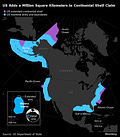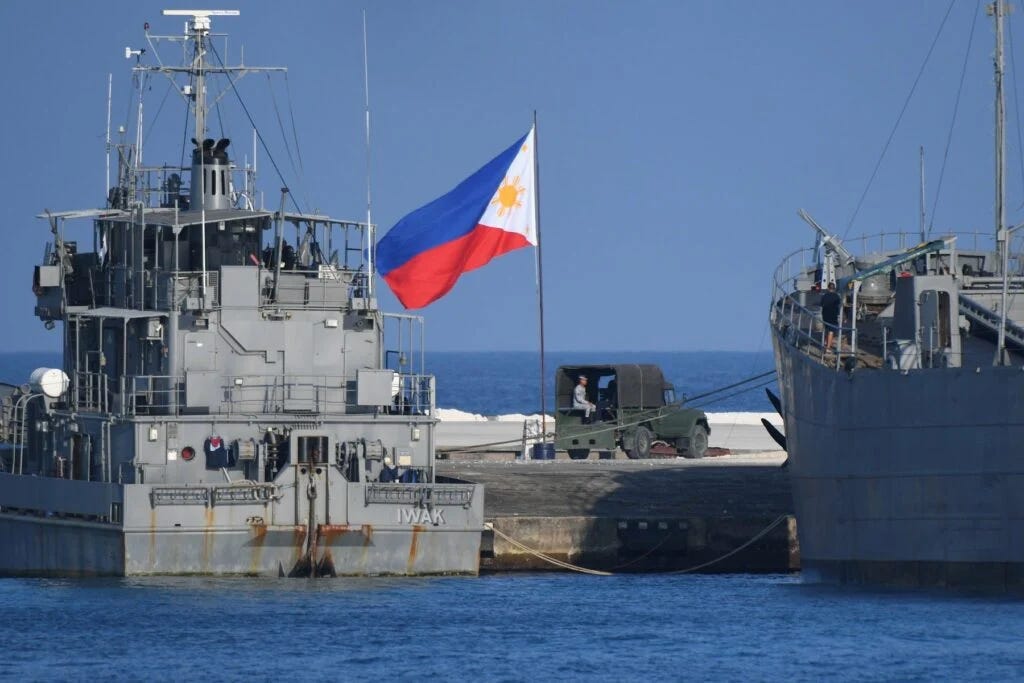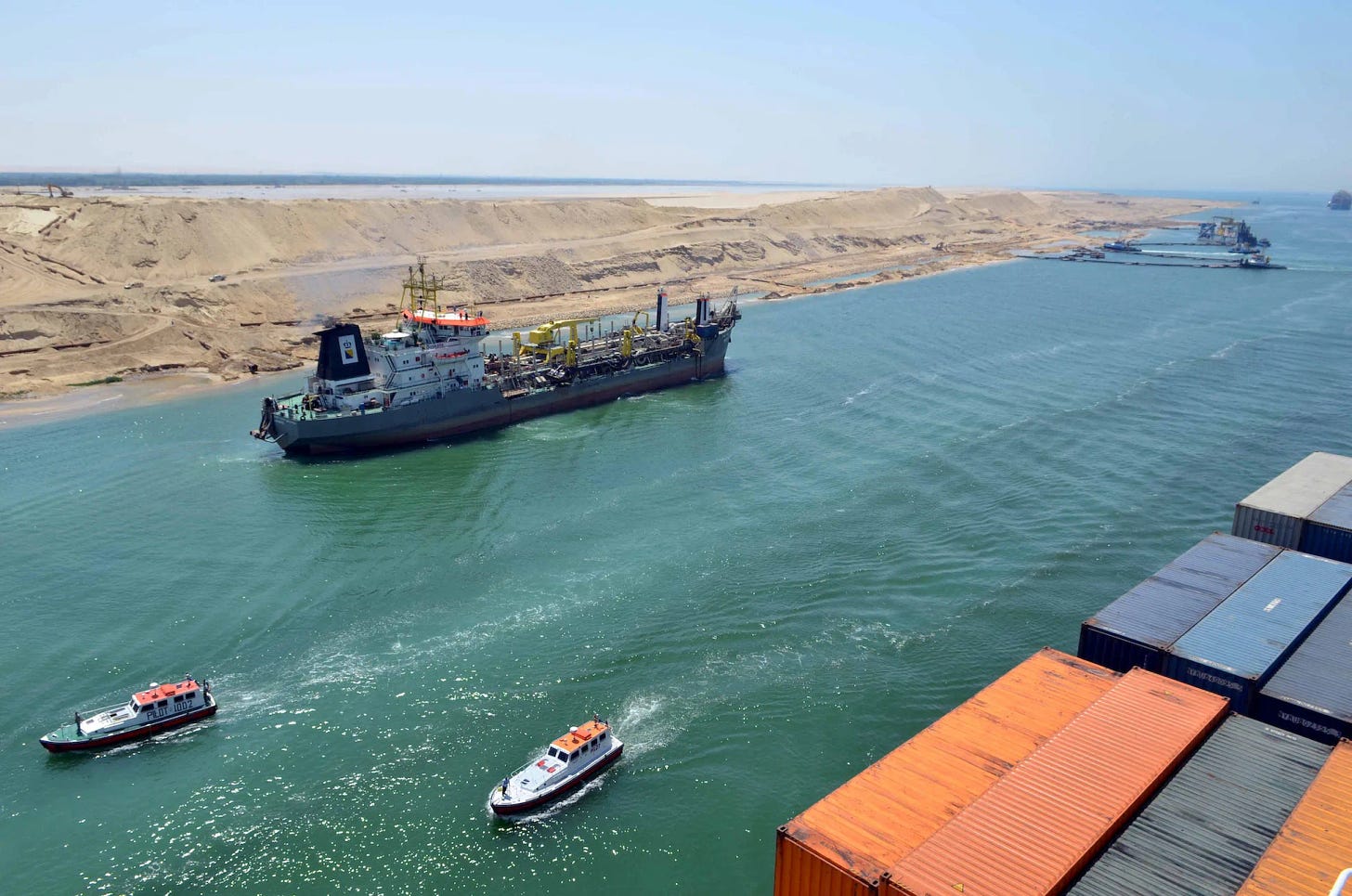Resource Rites
US Claims Huge Chunk of Seabed Amid Strategic Push for Resources, Philippines Plans to Explore Oil-Rich Sea Amid China Tension, China says Manila shouldn’t infringe on its sea rights.
UPDATES: The US extended its claims on the ocean floor by an area twice the size of California, securing rights to the potentially resource-rich seabed at a time when Washington is ramping up efforts to safeguard supplies of minerals key to future technologies.
The Philippines is building defense alliances with the US and other security partners to help pave the way for resource exploration in the oil-and-gas-rich South China Sea, the nation’s top defense official said, prompting a warning from Beijing.
Four tankers used for shipments of Qatari liquefied natural gas (LNG) resumed course after pausing for several days amid maritime attacks by Yemen’s Iran-backed Houthis in the Red Sea, LSEG ship tracking data showed on Tuesday.
US Claims Huge Chunk of Seabed Amid Strategic Push for Resources
By Bloomberg
The US extended its claims on the ocean floor by an area twice the size of California, securing rights to potentially resource-rich seabeds at a time when Washington is ramping up efforts to safeguard supplies of minerals key to future technologies.
The so-called Extended Continental Shelf covers about 1 million square kilometers (386,100 square miles), predominantly in the Arctic and Bering Sea, an area of increasing strategic importance where Canada and Russia also have claims. The US has also declared the shelf’s boundaries in the Atlantic, Pacific and Gulf of Mexico.
The long-awaited announcement earlier this week maps the outer reaches of the US continental shelf, the country’s land territory under the sea. Under international law, countries have economic rights to natural resources on, and under, the seabed floor based on the boundaries of their continental shelves.
“It’s a huge deal because it’s a huge amount of territory,” said Rebecca Pincus, director of the Polar Institute at the Wilson Center in Washington, which has devoted an entire web page to the ramifications of this week’s news. “It’s US sovereignty over the seabed floor, and so whether it’s seabed mining, or oil and gas leasing, or cables, or what have you, the US is announcing the borders of its ECS and will have sovereignty over those decisions.”
The US State Department said that the development “is about geography, not resources.”
The US, like all countries, has “an inherent interest in knowing, and declaring to others, the extent of its ECS and thus where it is entitled to exercise sovereign rights” it said in an emailed response to questions. Continued mapping and exploration will be needed to understand the areas’ habitats, ecosystems, biodiversity and resources, it added.
While it’s unclear what materials, if any, can be exploited, the claims come as Washington seeks to boost access to so-called critical minerals that are necessary for electric vehicle batteries and renewable energy projects, industries the Biden administration has tagged as key national security concerns. Meanwhile, there are competing calls to protect the fragile Arctic environment — the fastest-warming part of the planet — as climate change opens up the region to potential development.
Resource Potential
The US continental shelf contains 50 hard minerals, including lithium and tellurium, and 16 rare earth elements, James Kraska, chair and professor of International Maritime Law at the US Naval War College, wrote in an article this week. The extension “highlights American strategic interests in securing these hard minerals on its seabed and subsoil, lying sometimes hundreds of miles offshore,” he wrote.
he most recent assessment by the US Geological Survey, conducted in 2008, estimated that about 90 billion barrels of undiscovered oil and 1,670 trillion cubic feet of gas lie inside the Arctic Circle, along with critical metals needed for electrification. However, most of that estimate is based on land studies and the offshore potential is largely unexplored.
More than half of America’s extended continental shelf — 520,400 square kilometers — stretches in a large wedge north of Alaska toward the Arctic Ocean, including an area that overlaps with Canadian claims to the seabed floor, according to the US statement.
Another 176,300 square kilometers lies in the Bering Sea, between Alaska and Russia, but falls on the US side of the maritime boundary between the two countries. Canada and the US don’t have a maritime boundary agreement in the Arctic and establishing the US outer limits in the Arctic “will depend on delimitation with Canada,” the State Department said in its executive summary.
Canada’s Ministry of Foreign Affairs didn’t respond to a request for comment.
Read more here.
Philippines Plans to Explore Oil-Rich Sea Amid China Tension
By SCMP
The Philippines is building defense alliances with the US and other security partners to help pave the way for resource exploration in the oil-and-gas-rich South China Sea, the nation’s top defense official said, prompting a warning from Beijing.
“I really do think it’s quite urgent that we start now,” Defense Secretary Gilberto Teodoro Jr. said in an interview with Bloomberg News on Wednesday in his office in Manila. While he declined to provide details, Teodoro, 59, said that resource exploration is “part of the package” of the Philippines’ strategy in fighting for its territory.
His comments suggest that energy exploration could well be the next flashpoint in the territorial disputes in South China Sea where Beijing has laid a sweeping claim opposed by countries including the Philippines and rejected by an international tribunal in 2016. The Philippines, which imports almost all its fuel requirements, has been trying to start energy exploration in its territorial waters as a key local gas field nears depletion.
That bid had been largely foiled by the maritime dispute with China, which routinely deploys ships in the contested waters. Beijing’s agenda in the South China Sea may also be spurred by energy interests, according to Teodoro.
“This could mean that they really want total domination and control over everything from free passage to resources, or they want to bear hug the Philippines to make them the sole joint venture partner in the exploration or exploitation of resources in this area,” Teodoro said. “Their legal position is untenable and has been rejected by the whole world,” he said.
China’s Foreign Ministry spokesperson Mao Ning, in a briefing in Beijing on Thursday, reiterated “that the Philippines developing alliances with relevant countries should not infringe on China’s lawful rights and interests in the South China Sea.”
Philippine President Ferdinand Marcos Jr. had lately stepped up a push to end the deadlock in negotiations in South China Sea resource exploration, almost a year since he met Chinese counterpart Xi Jinping and agreed to jointly pursue discussions. Since that January 2023 meeting in Beijing, relations between the two neighbors have become rocky, marked by increasingly dangerous encounters at the sea.
The Philippines will not allow any joint exploration that doesn’t recognize the nation’s right to exclusively exploit these resources, the defense chief said. “Our role is to secure the territorial integrity and sovereignty of the Philippines and to protect as much as we can the peaceful and unimpeded exploitation by Filipinos and legally allowable entities,” said Teodoro, a lawyer by training and a one-time presidential contender.
In the face of a “more aggressive” China, the Southeast Asian nation is also planning “more robust” military activities with the US and its allies, Teodoro said, describing his nation’s alliance with America as “extremely strong.” In early 2023, the Philippines agreed to expand American access to military bases near Taiwan and the South China Sea.
The Philippines is also expanding ties with “other allies and like-minded countries” including Australia, Japan, the UK, and Canada. As the US heads into a crucial election in November, Teodoro hopes that Washington’s defense strategy in the Indo-Pacific will not waver.
Read more here.
Explainer: How could Red Sea attacks affect oil and gas shipping?
By Alarabiya News
Four tankers used for shipments of Qatari liquefied natural gas (LNG) resumed course after pausing for several days amid maritime attacks by Yemen’s Iran-backed Houthis in the Red Sea, LSEG ship tracking data showed on Tuesday.
The Houthi group has since November been attacking vessels in the Red Sea, part of a route that accounts for about 12 percent of the world’s shipping traffic, in what they say is an effort to support Palestinians in the war with Israel.
The attacks have raised the specter of another bout of disruption to international commerce following the upheaval of the COVID-19 pandemic and prompted US-led air strikes on Yemen.
What are the latest developments?
At least four tankers used to carry Qatari LNG were held up over the weekend after US and British forces responded by carrying out dozens of air and sea strikes on Houthi targets in Yemen.
“It is a pause to get security advice, if passing (through the) Red Sea remains unsafe we will go via the Cape,” a senior source with direct knowledge of the matter told Reuters on Monday. “It is not a halt of production.”
In the oil market, at least six more oil tankers have either diverted their course away from, or paused before entering the southern Red Sea since the weekend, ship tracking data from LSEG and Kpler show.
Is the Red Sea route important for the LNG market?
The attacks have made reaching the Suez Canal more perilous. About 12 percent of world shipping traffic transits the canal and 4 percent-8 percent of global LNG cargoes passed through it in 2023.
As much as 8.2 million barrels per day (bpd) of crude oil and oil products traversed the Red Sea in the January-November period of 2023, according to analytics firm Vortexa.
Around 16.2 million metric tons (MMt), or 51 percent of LNG trade, flowed from the Atlantic Basin east through the Suez Canal last year, while 15.7 MMt went through the canal from the Pacific Basin west, according to S&P Global Commodity Insights.
Who are the main shippers through the route?
The Suez Canal is one of the most important arteries of the global oil trade.
Qatar, the United States and Russia are the most active shippers of LNG via Suez.
Qatar tops active shippers of cargoes heading from the East to Europe but nonetheless provides only around 5 percent of net EU and UK imports.
“In reality, Qatar is the only exporter in an east-to-west direction via the Suez Canal,” said Robert Songer, LNG analyst at date intelligence firm ICIS.
An alternative route to Europe through the Cape of Good Hope could add around nine days to the 18-day voyage from Qatar to Northwest Europe said ICIS LNG analyst Alex Froley.
For LNG to Asia, Qatar comes on top followed by the United States which has been using the Suez Canal recently as an alternative to the Panama Canal.
Are prices impacted?
Asia spot LNG prices fell to a seven-month low of $10.10 per million British thermal units (mmBtu) on Friday, supported by healthy storage levels in Europe and northeast Asia.
High inventories in Europe and North Asia are capping demand and expected to curb spot price growth in H1-2024.
Oil prices rallied 2 percent last week, with both benchmarks notching intraday 2024 highs, including Brent eclipsing $80 a barrel, but prices eased on Monday as the conflict’s limited impact on crude output prompted profit-taking.
“The realization that oil supply has not been adversely impacted is leading last week’s bulls to take profit,” Tamas Varga of oil broker PVM told Reuters.
There have been no oil supply losses so far, but the shipping disruption is indirectly tightening the market by keeping 35 million barrels at sea owing to the longer journeys shippers have to take to avoid the Red Sea, Citi analysts wrote.
Insurance war risk premiums have gone up from $2,000 to $10,000 as a result of the disruption, and before the strikes by US and Britain late last week, had jumped further to $30,000, a shipping source who declined to be named told Reuters.
Read more here.







